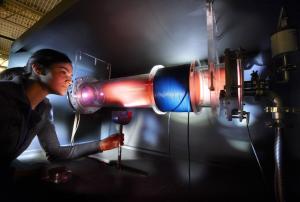While challenges remain in harnessing fusion as an energy source, significant advances have been made in the last decades. Beyond moving fusion closer to the point of industrialization, there have been lesser-known spinoff benefits to the development of fusion technology, including applications in engineering, diagnostics, superconducting technologies, and medicine.
For example, early work in magnetic fusion energy led General Atomics, a San Diego-based innovation firm, to improve power systems for the US government and commercial customers. Technological advances include the Electromagnetic Aircraft Launch System (EMALS), an electromagnetic catapult that will replace steam catapults used currently on aircraft carriers.



